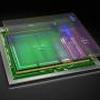Xavier is a complete system-on-chip (SoC) based on ARM, integrating a new GPU architecture called Volta (successor to Pascal), a custom 8 core CPU architecture, and a new computer vision accelerator. You could look at the SoC as next-gen Tegra.
The processor will deliver 20 TOPS (trillion operations per second) of performance, while consuming only 20 watts of power. As the brain of a self-driving car, Xavier is designed to be compliant with critical automotive standards, such as the ISO 26262 functional safety specification. The processor will house 8 ARM cores. On the graphics side of things, a Volta generation implementation is injected and it will get 512 shader processor cores. On Volta architecture however nothing really is known.
Packed with 7 billion transistors, and manufactured using 16nm FinFET process technology, a single Xavier AI processor will be able to replace today’s DRIVE PX 2 configured with dual mobile SoCs and dual discrete GPUs — at a fraction of the power consumption.
| |
|||
| Xavier (Volta) | Parker (Pascal) | Tegra X1 (Maxwell) | |
| Processor | 8 cores NVIDIA Custom ARM64 |
2x NVIDIA Denver + 4x ARM Cortex-A57 |
4x ARM Cortex-A57 + 4x ARM Cortex-A53 |
| Shader processors | 512 | 256 | 256 |
| Memory type /bus | N/A | LPDDR4, 128-bit Bus | LPDDR3, 64-bit Bus |
| Video Processing | 8K Encode 8K Decode HDR |
4K Decode 4KEncode |
4K Decode 4K Encode |
| Transistors | 7B | N/A | N/A |
| Fab Process | TSMC 16nm FinFET+ | TSMC 16nm FinFET+ | TSMC 20nm Planar |
Because autonomous driving is an incredibly compute-intense process, the need for an efficient AI processor is paramount. Xavier will bring self-driving car technology to automakers, tier 1 suppliers, startups and R&D organizations that are building autonomous vehicles, whether cars, trucks, shuttles or taxis. Xavier samples will be available the fourth quarter of 2017 to automakers, tier 1 suppliers, startups and research institutions who are developing self-driving cars.
To be continued, in a far away future as you are looking at the 2018 timeframe for the initial products to hit the market. Interesting sidenote, Nvidia announced a deal with TomTom. Keep that one in mind.



